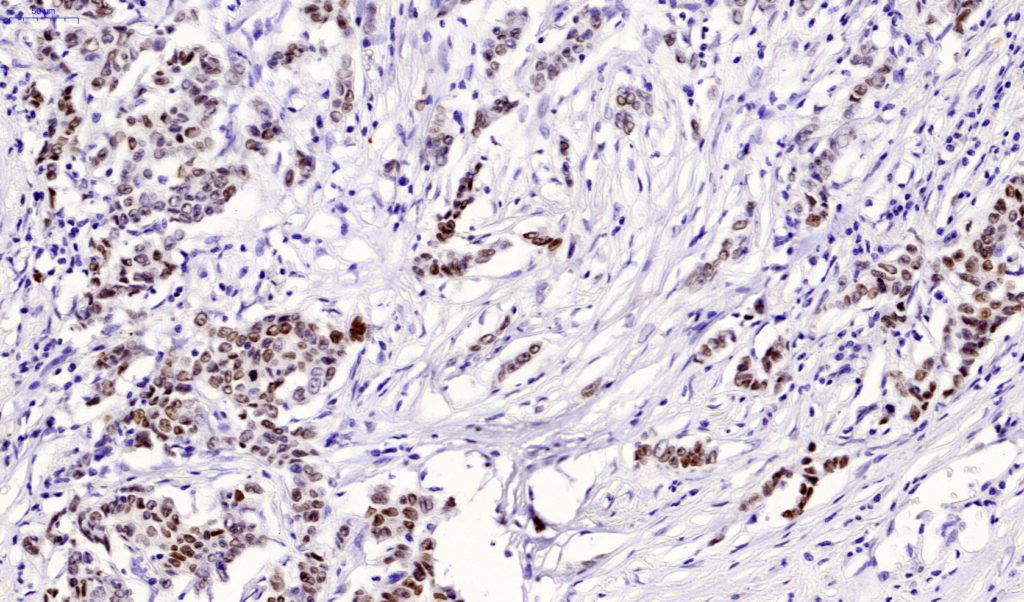Rabbit Monoclonal Antibody
Transcriptional repressor binds specifically to GATA sequences and repress expression of GATA-regulated genes at selected sites and stages in vertebrate development. Regulates chondrocyte proliferation and differentiation. Executes multiple functions in proliferating chondrocytes, expanding the region of distal chondrocytes, activating proliferation in columnar cells and supporting the differentiation of columnar into hypertrophic chondrocytes. Ubiquitously expressed in the adult. Found in fetal brain, lung, kidney, liver, spleen and thymus. More highly expressed in androgen-dependent than in androgen-independent prostate cancer cells.
Availabillity:
| Catalog No. | Contents | Volume |
| ILM7227-C01 | TRPS1 | 0,1 ml concentrate |
| ILM7227-C05 | TRPS1 | 0,5 ml concentrate |
| ILM7227-C1 | TRPS1 | 1,0 ml concentrate |
Intended use: For research use only
Reactivity: Human, others not known
Clone: TRPS1/8131R
Human Gene ID: 7227
Human SwissProt: Q9UHF7
Human Unigene: 657018
Species of origin: Rabbit
Isotype: IgG, Kappa
Immunogen: Recombinant fragment (around aa900-1100) of human-TRPS1 protein (exact sequence is proprietary)
Control Tissue: Human squamous epithelium, breast or breast cancer
Staining: nuclear
Presentation: Bioreactor Concentrate with 0.05% Azide
Application and suggested dilutions:
Pre-treatment: Heat induced epitope retrieval in 10 mM EDTA buffer pH9.0 for 15 minutes is required for IHC staining on formalin-fixed, paraffin embedded tissue sections.
- Immunohistochemical staining of formalin-fixed, paraffin embedded tissue section (dilution up to 1:25)
- Western blot (1-2ug/ml)
The optimal dilution for a specific application should be determined by the investigator.
Note: Dilution of the antibody in 10% normal goat serum followed by a Goat anti-Rabbit secondary antibody-based detection is recommended.
Storage & Stability: Store at 2-8 °C. Do not use after expiration date printed on the vial.
Reference:
Ai, Di et al. ‘’TRPS1; a highly sensitive and specific marker for breast carcinoma, especially for triple-negative breast cancer’’. modern pathology; an official journal of the United States and Canadian Academy of Pathology, Inc vol 34,4 (2021): 710-719. Doi: 10.1038/s41379-020-00692-8

